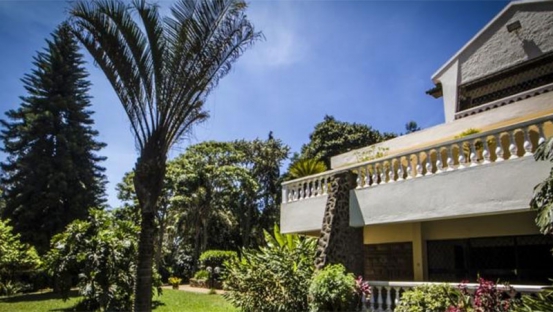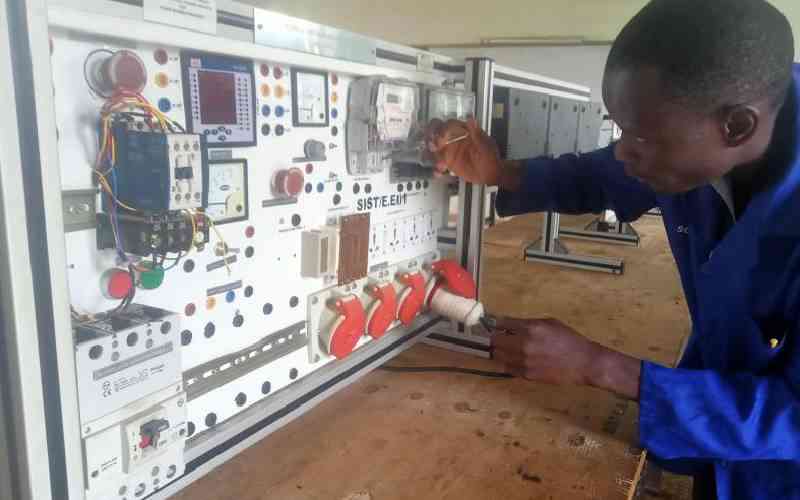
The name Karen is synonymous with affluence, tranquility and security. The leafy Nairobi suburb is perhaps one of the most sought-after neighbourhoods. It is home to who is who in Kenya’s political and corporate world. The area is home to Deputy President William Ruto’s palatial residence.
The suburb also plays host to a number of internationally acclaimed organisations such as the Giraffe Centre, Karen Blixen Museum, Brookhouse School, Banda School and Hillcrest School.
Thanks to Ololua and Ngong forests, the air here is fresh, unlike in many estates in Nairobi.
INCREASED POPULATION
Ten years ago, the road from Bomas Stage on Langata Road to Karen Shopping Centre did not have a single bump. It was a smooth drive.
Fast-forward, today the road has no less than 10 bumps alongside warning rumble strips due to increase in population and vehicular traffic along the road.
In recent years, Karen residents have had to put up with increased population and this in turn has led to unplanned for development.
Steve Oundo, the chairman of the National Construction Authority (NCA) says when there is development, the demand for social services increases and this is followed by development of schools and hospitals among other amenities.
“You can see that the roads around Karen have been expanded and this is to allow for more traffic. Langata and Ngong roads are being expanded to ease movement,” says Oundo.
It is common to experience traffic snarl-ups stretching from CITAM Karen all the way to Mamba Village junction as well as from Karen Hospital to Karen Shopping Centre mainly during the early morning and early evening rush hours. The situation worsens when it rains, especially in some parts around Fair Acres Road to Bomas.
Yet this was an area that had never known traffic snarl-ups. James Maina, who has lived all his life as a casual worker in the area, says that in the early 2000, there used to be few public service vehicles plying the route. Most of the people who lived there had private cars.
“If you missed the bus, you would have to wait for almost an hour for the next vehicle. They would connect from Karen to the Cooperative University through Hardy to Bomas and eventually to town,” recalls Maina.
The emergence of haphazardly planned structures continues to blight the area that had a reputation for orderliness. Car bazaars dot the streets along with small retail shops in every junction. Academic institutions have popped up in the area.
From a time when there were only two major institutions of higher learning, The Catholic University of Eastern Africa and the Kenya College of Telecommunications Technology (now Multimedia University), more have been established, leading to a need for services like accommodation and retail outlets. One of the oldest institutions was the Cooperative college of Kenya, which is now a full-fledged university.
Titus Musungu, a senior physical planner in the Ministry of Lands, says that all development processes are informed by population increase.
CHANGING TIMES
“Some of these developments are informed by urban development dynamics, which means that when people have increased in number, then the need for facilities increase; but these differ only with specifics like location and infrastructure,” says Musungu.
More institutions have been set up like Jomo Kenyatta University of Agriculture and Technology (JKUAT) Karen Campus and Kenya School of Law. Others like Tangaza and Marist International university colleges also led to the influx of students by changing policy from just admitting students from Catholic communities to lay students. Cooperative University on the edge of Nairobi and Kajiado counties on the other hand saw its capacity increase, which culminated in a charter that made it a full-fledged university last year.
The coming-up of shopping malls now marks the area. From the Galleria Mall at the Bomas Junction to the mall in Hardy, the Cross Roads Mall and The Hub in Karen, the area keeps changing with numerous housing estates also sprouting.
Stay informed. Subscribe to our newsletter
And Karen now has its first public secondary school, Karen C Girls Secondary School, which started off as a mixed school beside Karen C Primary, but saw boys being phased off to make it a girls-only school. This is the only public girls’ boarding school in Langata sub-county.
Needs for other social services are on the rise. Right now, it is common to find green grocers on the roadsides, just as finding a crowded pub opposite the Kenol Petrol Station on Mokoyeti East Road is.
Oundo says changes in legislation on land have also contributed to the changing times. While it was against the law to subdivide land below five acres, the law has been slackened to allow for subdivision up to half an acre. This means that more people have bought land, leading to further fragmentation of plots.
This subdivision came with increased property prices with the Hass Consult Property index for the fourth quarter of 2016 showing that price for land has tripled since 2007 while the rent fee has doubled in a similar period.
Peter Miti, who has invested in a hostel business there, says that the number of students also offered a business opportunity for investors.
“The increased number of universities came with an increased need for accommodation,” says Miti, who also argues that the increase in population has also come with its own challenges. For example, residents here have to grapple with water shortage and crime in some parts of Karen. The symbiotic relationship between upmarket and low-income informal settlements at times leads to undesired social behaviour.
Cases of criminals waylaying victims at night have been reported especially along the roads leading to Kuwinda.
However, Musungu says control in development is still in force as haphazard constructions are not permitted. He argues that Karen started off as an exclusive neighbourhood but has now grown both vertically and horizontally and this has varying implications on the residents.
 The Standard Group Plc is a
multi-media organization with investments in media platforms spanning newspaper
print operations, television, radio broadcasting, digital and online services. The
Standard Group is recognized as a leading multi-media house in Kenya with a key
influence in matters of national and international interest.
The Standard Group Plc is a
multi-media organization with investments in media platforms spanning newspaper
print operations, television, radio broadcasting, digital and online services. The
Standard Group is recognized as a leading multi-media house in Kenya with a key
influence in matters of national and international interest.
 The Standard Group Plc is a
multi-media organization with investments in media platforms spanning newspaper
print operations, television, radio broadcasting, digital and online services. The
Standard Group is recognized as a leading multi-media house in Kenya with a key
influence in matters of national and international interest.
The Standard Group Plc is a
multi-media organization with investments in media platforms spanning newspaper
print operations, television, radio broadcasting, digital and online services. The
Standard Group is recognized as a leading multi-media house in Kenya with a key
influence in matters of national and international interest.










